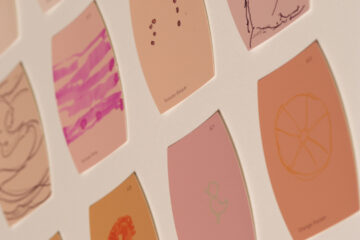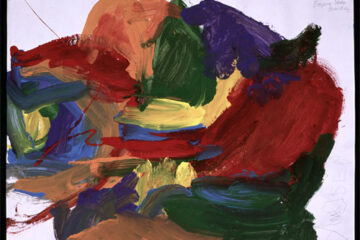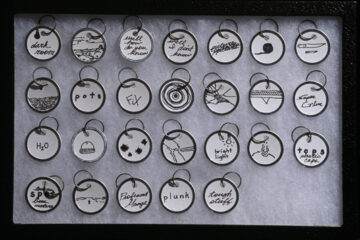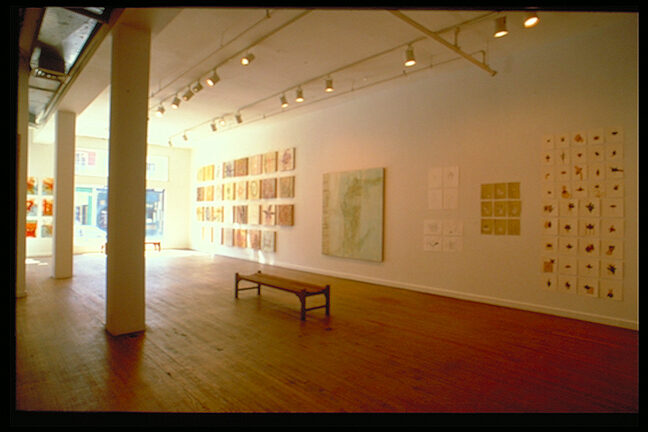

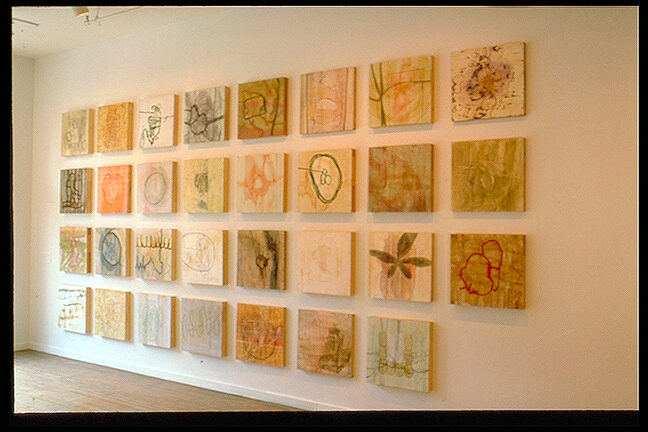

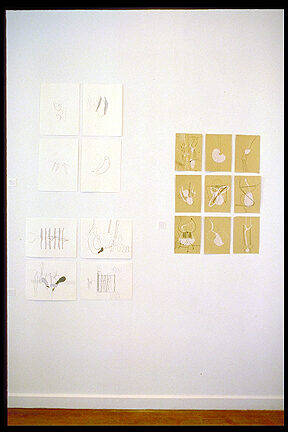

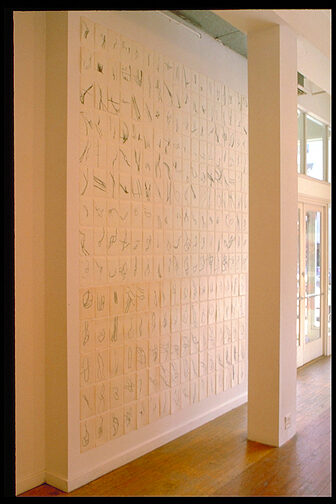
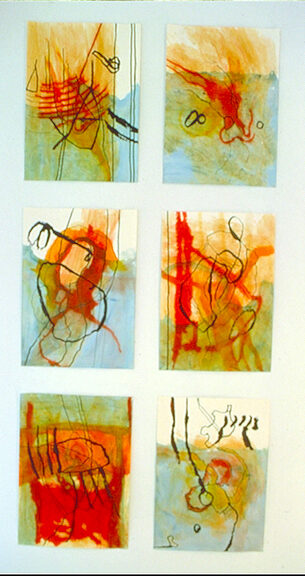
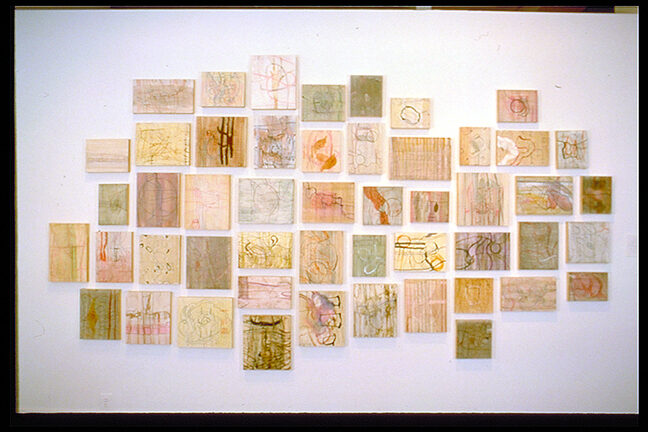
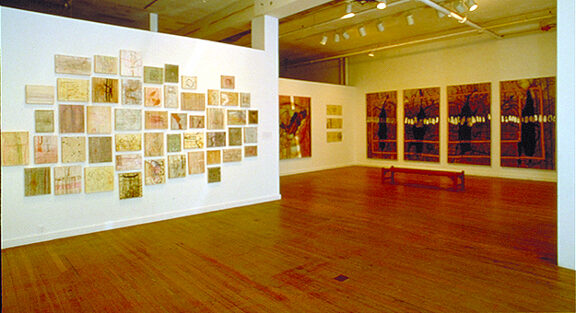
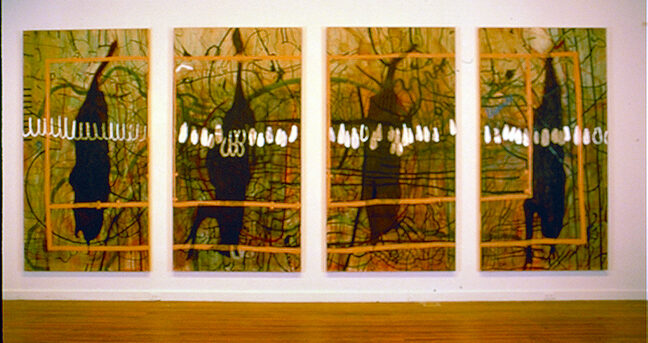


Willful Poetries • Essay by Jack Livingston
Patrick Burns and Sonia Denise Tassin both grew up along the southern Gulf coast, both were raised Catholic, and both maintain strong personal ties to the region. Burns is from a small Texas town just southwest of Houston. He pursued his art education in Texas and then worked in Houston as an artist for a number of years before relocating to Baltimore two years ago. Tassin is from Lake Charles, Louisiana. She too pursued an Arts education in Texas and later relocated to Baltimore.
Their paintings are presented in tandem one-person shows this month at Maryland Art Place, Tassin in the downstairs gallery and Burns upstairs. Each has been given the luxury of a self edited and presented exhibition.
There is understandably more than a hint of Gulf coast regionalism awash in both of these shows. Regionalism is a timely subject in light of the current buzz like discourse surrounding cultural homogenization in the United States, note Lucy Lippard's recent book on the subject. If Lippard is writing about regionalism then something must be up I guess but both artists successfully do more than just expound upon some obvious regionalist fanfare. Both artists let irony fall by the wayside for the most part and instead pursue personal mature heartfelt painting. They both arrive at some flickering place between abstraction and realism often replete with both depth and intelligence.
Tassin creates an immense amount of artwork. She presents a total of an astonishing 155 works in the show. I am told this is but a portion of her recent production. She presents her work mostly in grid combinations with some welcome variation. Her painting's surfaces are fleeting and watery with elusive bulbous forms surfacing and fading, vegetation and animus jumping and writhing from panel to panel. The mostly muted colors repeat and coalesce, pigments culled widely from many sources outside the usual artstore fare. Tassin says the colors and forms in her work all carry strong personal psychological connotations, and she is adamant about the presentation and importance of her works individual titles.
All this work runs together like vignettes of a beatific but at times frightening dream, improvised and orchestrated into some overall theme the artist may or may not be fully aware of. The first time I walked into the show I was reminded of the improvised concerts by celebrated jazz pianist Keith Jarrett. A fair analogy it turns out. When I asked Tassin for her top five art influences she listed five musicians, all known primarily as pianists: Satie, Gould, Chopin, Jarrett, and of course John Cage. She can name just as many visual artist influences as well of course, but had to be reminded to do so. Eva Hess is the one I recall most which makes sense in relation to her work, but to me the musicians clearly have a more direct correlation. Tassin is definitely speaking a tonic language in her massive outpouring. The sound is not all tinkling minor augmented chords either; I hear some stomping roadhouse blues as well. She works mostly on wood and paper surfaces, generally medium to small size. The four larger works that sit between the cinematic grid structures are more gestural and very important in the expansion of Tassin’s vocabulary. A four-panel piece covering one entire wall is most impressive; each panel eight by four feet repeats what appears to be a hanging meat form. Dark, furry, and hopefully dead it has the entire dirt, glory, and spittle of a backwoods swampland hunt. The specter of Joseph Bueys is present. But as Tassin comes from an area of the country where powerful Afro-American/Catholic religions such as Santeria and Voudoun have long been in serious practice who is to say where her sense of alchemy comes from.
The artist has provided benches in the gallery, and hopefully viewers will use them. All too often we scoot by artists work as if looking over products at the local supermarket. Tassin’s show begs contemplation and her exhibit will be most rewarding if the viewer takes some time.
While Tassin's work is heavily invested in her own private swamp, Burns has made a dash for the sea. From the looks of it, he is having a swell time getting in trouble with the moral brambles inextricably present in his futile escape from the mainland morass. Burns has increasing turned away from the earth tone palette of earlier work, embracing a new primary palette of brighter and more acrid hue produced on large sheets of paper. Across swathes of vibrant layered ultramarine blue lines, green dots and glowing cadmium washes appear large thorn constructions and patterns. A clear allusion to Mr. Burns’ Catholic roots amid Texas pop kulture convulsions. It is well documented that much of the foundation for San Francisco’s transformative psychedelic scene of the sixties came from a group of transplanted Austin college kids enamoured of mushrooms and loud electric blues. Take note of this fact while looking over Burns’ show.
In a conversation some months back, Burns told me of his ties to small town east Texas life near the Gulf. It is a pretty strange place down there, even by Southern standards. He spoke of his rather typical mildly misspent youth, his almost daily escape to the nearby beaches for surfing and late sixties teen kicks. He admired the painted ornamentation of Big Daddy Roth era hotrods, and had a taste for noisy honest roots music. I see all of these influences in one way or another in his paintings. But the paintings are more than that. In Burns’ new work he seems to dig deeper with more clarity than previously and has emerged with a tight spare muscular body of work expressing both redemption and a giddy, sometimes raucous, sometimes grim struggle with the darker side of life.
Burns utilization of standard acrylic paint on paper is interesting and unusual. He employs various varnishes and layers thereby achieving a multitude of effects. But the viewer is rarely aware of his virtuosity because the paintings achieve a purposeful wholeness. There are no figures in these works, yet they carry themselves strongly as near figurative works. The object/ground relationship in each painting promotes a sense of mystery and meaning. Ultimately it is here the work succeeds most, in its mix of ’formal’ painterly concerns and ability to sustain a solid sense of identity beyond painting as a fetish object.
The opportunity to witness a complete body a single artist’s work is refreshing after seeing show after show sporting often-tenuous themes. These type of group shows usually offer four to ten artists per show. This allots the public only a cut and paste sample of any single artist’s work and often contextualizes the work in very narrow ways. The desire for maximum utilization of the small amount of decent show space available in Baltimore makes the group show popular. However this double one-person show, ideal at MAP with its two-floor layout, confirms the need for more expansive examinations of the regions artists which only the one-person exhibition can offer.
MAP is to be commended for presenting this excellent exhibit this August. A month when many community art spaces close down, turn off the air-conditioning to save some dough and send the overworked staff off on a much-needed vacation.
Opening for the artists, this coming Sat August 23, three to five PM.
Jack Livingston, artist and writer
